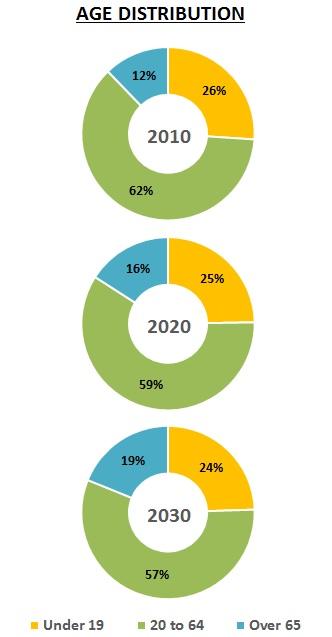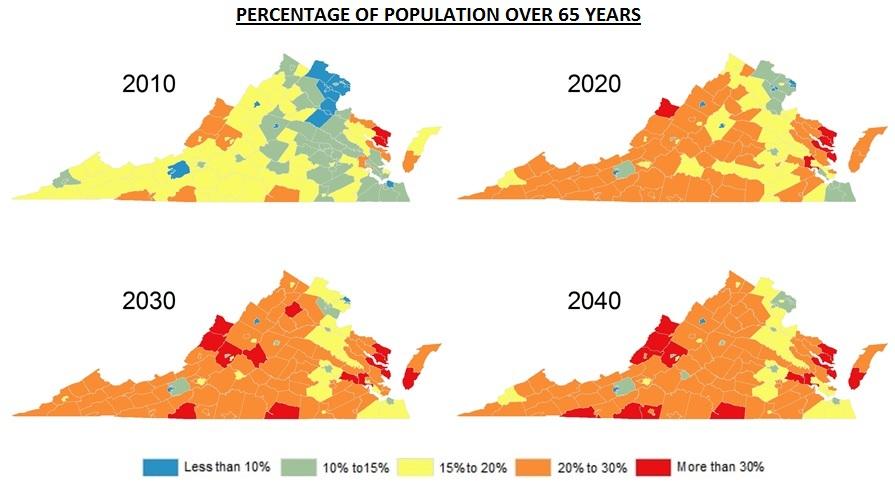1 in 5 Virginians will be over 65 years by 2030

Our recently released population projections for Virginia show that the total population is projected to expand to nearly 8.75 million residents by 2020 and to over 10 million residents by 2040. A large number of these people will be 65 or older. Virginia’s elderly population is anticipated to nearly double in size between 2010 and 2030, accounting for about 1 in 5 Virginians.

This rising share of older Virginians aged 65 and over can be seen from the age distribution (to the right), from 12% in 2010 to 16% in 2020, and reaching 19% by 2030. In addition, Virginia’s seniors will also contribute the largest amount to the overall population growth across the commonwealth. Between 2010 and 2030, the increase of the senior population accounts for 53% of the total population growth.
Developments in health care and medical advances have improved life expectancy, which means the baby-boomer generation—who were a larger cohort to begin with—are expected to live longer than the previous generations. This will have implications for health care providers and senior support services, who need to be prepared for the future decades as they will face increasing demand.
Different age groups have different economic impacts and demographic footprints. The ratio of the population over 65 to that between 20 and 64 years provides a quick measure of social support needs for the elderly. For Virginia overall, the ratio was 20% in 2010 but is expected to rise steadily to 27% in 2020 and 33% in 2030, which serves as a proxy for the dependence of older persons on the economically active cohorts. Across localities, Lancaster and Northumberland have an age composition yielding very high ratios of the elderly to the working age population.
While the share of Virginia’s residents over 65 is expected to increase across the board, the growth in seniors will be disproportionately concentrated in rural counties for the initial decades and then spread further outwards (as seen from the orange and red in the maps). In a number of counties, the share of residents over 65 may rise to above a third of their populations. For instance, Lancaster, Northumberland, Middlesex, Matthews, and Highland are expected to consistently have an older population structure.

Growth in Virginia is expected to be driven by more people moving into the commonwealth than moving out, but also from the rising share in Virginia’s older population. This is evident from the population pyramids showing both the gender distribution as well as the size of each cohort. Over time, the baby-boomers and echo-boomers will progress up the pyramid as they age into their senior years, which is reflected in the charts below. The long term effects of lower births rates, delayed child bearing, and overall decline in rapid immigration will make the theoretical age “pyramid” increasingly barrel shaped, resulting in the smaller younger cohorts supporting a heavier top created by the older generations.

For more details on how these projections were developed, please visit our Virginia Population Projections webpage.


